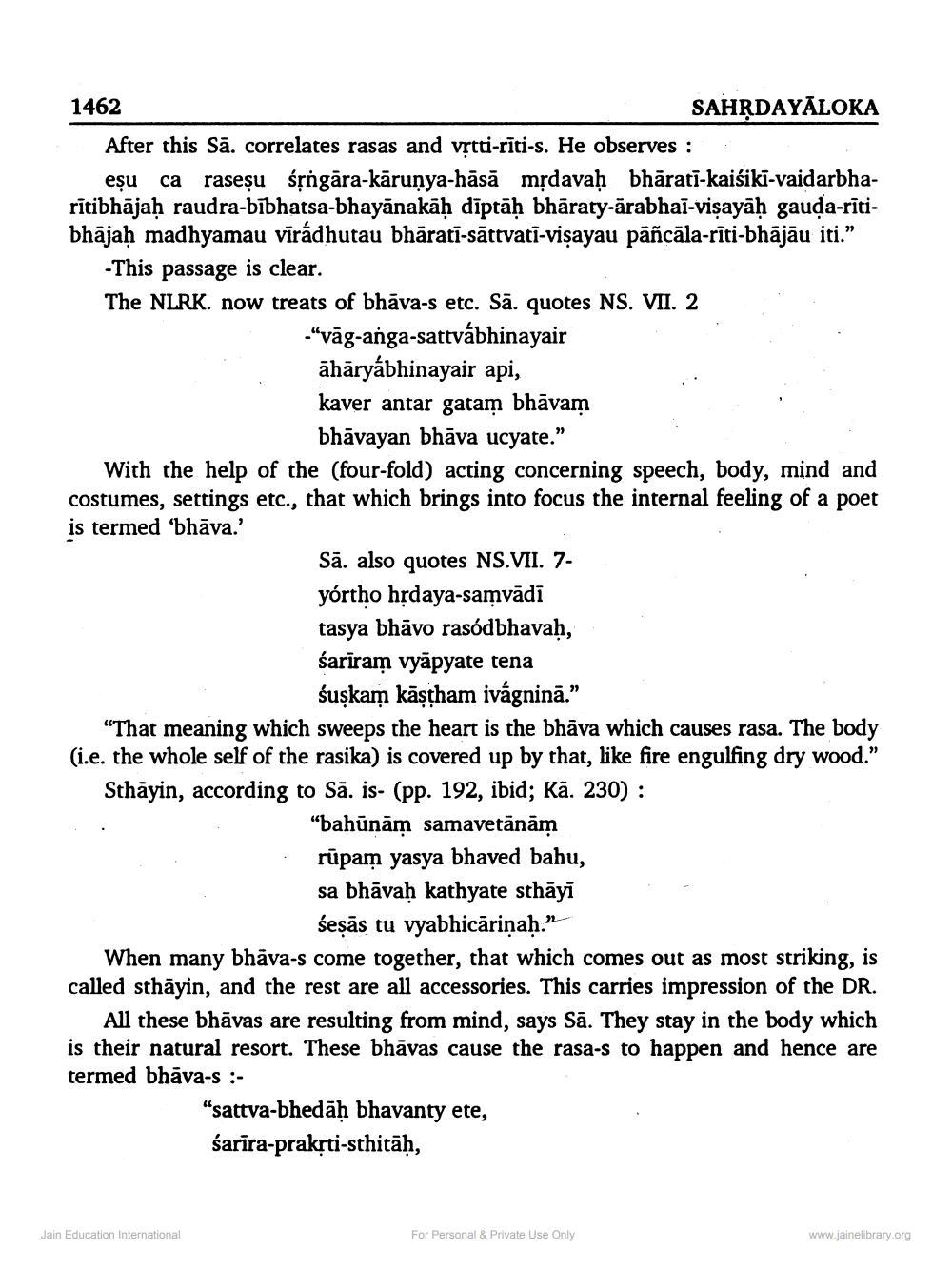________________
1462
SAHRDAYĀLOKA After this Sā. correlates rasas and vịtti-rīti-s. He observes :
eșu ca raseșu śộngāra-kārunya-hāsā mțdavaḥ bhārati-kaisiki-vaidarbharītibhājaḥ raudra-bībhatsa-bhayānakāḥ dīptāḥ bhāraty-ārabhas-visayāḥ gauda-rītibhājaḥ madhyamau vīrád hutau bhārati-sātrvatī-vişayau pāñcāla-rīti-bhājāu iti.”
-This passage is clear. The NLRK. now treats of bhāva-s etc. Sā. quotes NS. VII. 2
- "vāg-anga-sattvábhinayair
āhāryábhinayair api, kaver antar gatam bhāvam
bhāvayan bhāva ucyate.” With the help of the (four-fold) acting concerning speech, body, mind and costumes, settings etc., that which brings into focus the internal feeling of a poet is termed 'bhāva.'
Sā. also quotes NS.VII. 7yórtho hrdaya-samvādī tasya bhāvo rasodbhavah, śarīram vyāpyate tena
śuskam kāştham ivágninā.” "That meaning which sweeps the heart is the bhāva which causes rasa. The body (i.e. the whole self of the rasika) is covered up by that, like fire engulfing dry wood.” Sthāyin, according to Sā. is- (pp. 192, ibid; Kā. 230) :
"bahūnām samavetānām rūpam yasya bhaved bahu, sa bhāvaḥ kathyate sthāyi
seșās tu vyabhicāriņaḥ." When many bhāva-s come together, that which comes out as most striking, is called sthāyin, and the rest are all accessories. This carries impression of the DR.
All these bhāvas are resulting from mind, says Sā. They stay in the body which is their natural resort. These bhāvas cause the rasa-s to happen and hence are termed bhāva-s :
"sattva-bhedāḥ bhavanty ete,
śarīra-prakrti-sthitāh,
Jain Education International
For Personal & Private Use Only
www.jainelibrary.org




